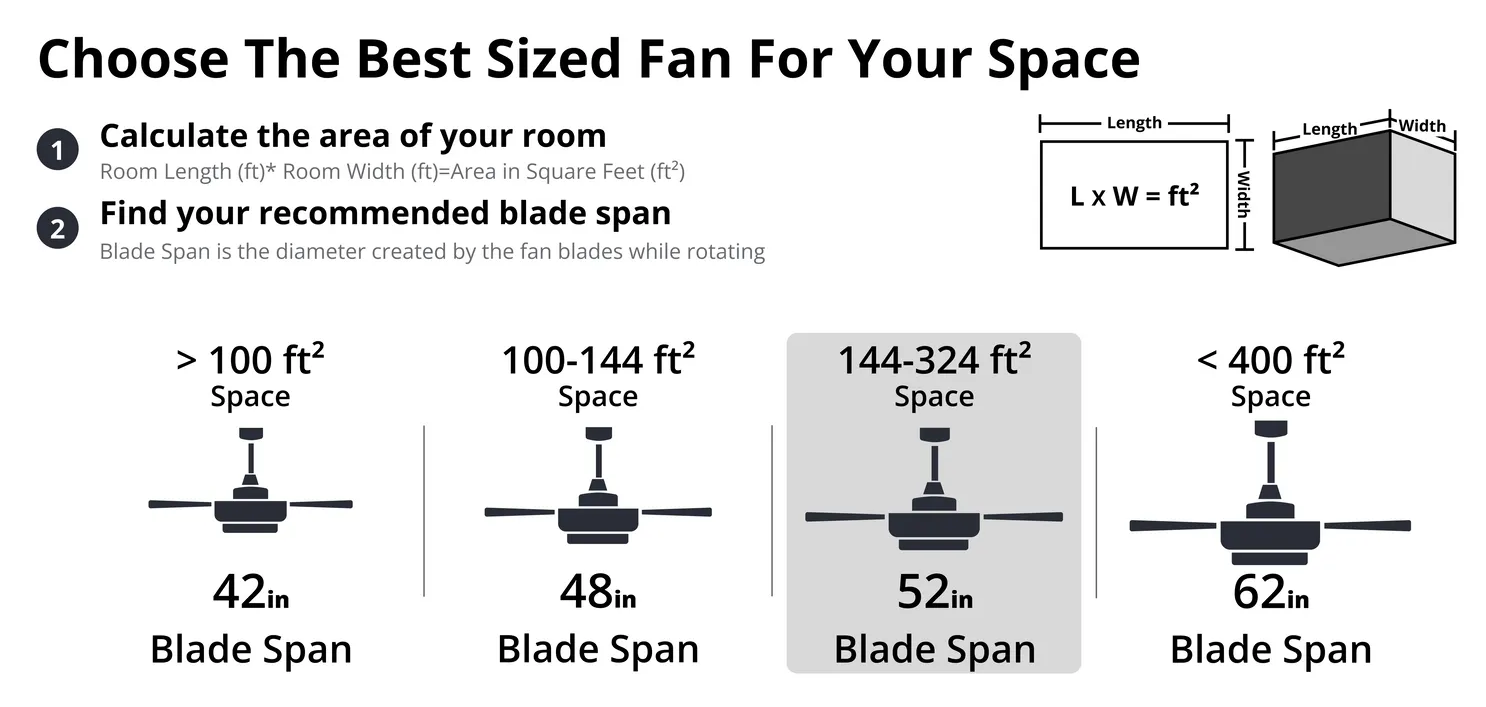
How to Measure a Ceiling Fan?
A ceiling fan is more than just a cooling device; it's a design statement and a breath of fresh air in any room. Whether you're upgrading or installing for the first time, the right size matters. SoFucor, a leading professional manufacturer specializing in Ceiling Fans, provides expert insights on how to measure a room, ceiling fan, downrod length, and additional considerations for optimal fan selection.
1. How to measure a room for a ceiling fan
Before you choose to buy a ceiling fan, measure your room accurately to ensure the perfect fit. Here's a simple step-by-step guide:
Square Footage Matters:
Different room sizes require different fan sizes. Small rooms under 75 square feet suit fans ranging from 29 to 36 inches, while larger spaces like bedrooms and living rooms need fans 50 inches or larger.
Easy Measurement for Rectangular Rooms:
Use a tape measure to find the length and width of the room, then multiply these values to determine the area. For L-shaped rooms, calculate each section separately and add the results.
Tip: In larger spaces, consider multiple fans for enhanced air circulation.
2. How to measure a ceiling fan
Now that you know your room size, it's time to match it with the right ceiling fan. Here's how to measure the fan itself:
Determine the Fan Size:
Look for the fan size on the box or product webpage when purchasing a new fan. To measure an existing fan, focus on the diameter, ensuring it complements your room size.
Measuring the Diameter:
Turn off the fan, use a step ladder if needed, and measure from the tip of one blade to the tip of the opposing blade for even blades. For odd blades, measure to the center and multiply by two for the diameter.

3. How to measure ceiling fan downrod length
A downrod is crucial for stability and optimal performance. Here's how to measure for the perfect downrod length:
Measuring Ceiling Height:
Use a tape measure and a step ladder to calculate the distance from the floor to the ceiling. For ceilings under eight feet, opt for a low-profile fan; for nine feet or more, choose a fan with a downrod.
Calculating Downrod Length:
Subtract the fan height from the ceiling height, then subtract that number from your desired hanging height. This gives you the ideal downrod length for efficient air circulation.
Remember: Ensure at least seven feet of clearance from the floor and 30 inches from the nearest wall or door.
4. Additional ceiling fan size considerations
As you finalize your ceiling fan selection, consider these additional factors:
Light Kits:
If your fan includes lights, account for the added height in your calculations.
Support:
Confirm that your chosen mounting area can support the fan's weight and has the appropriate electrical junction box.
Obstacles:
When calculating downrod length, consider potential obstacles like cabinets and doors, ensuring a 30-inch clearance for fan blades.
Ceiling Shape:
If your ceiling is angled, check if you need an angled ceiling mount adapter for angles greater than 32 degrees.
Choosing the right ceiling fan goes beyond aesthetics; it's about comfort, efficiency, and a seamless fit into your space. With these simple steps, you can confidently select a ceiling fan that not only cools but enhances your room's style. Happy cooling!
